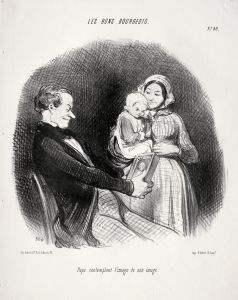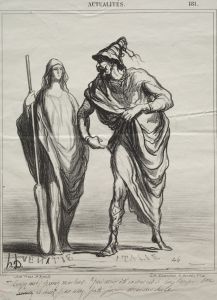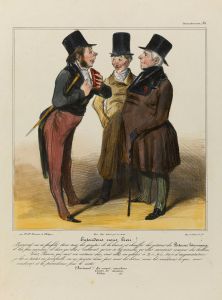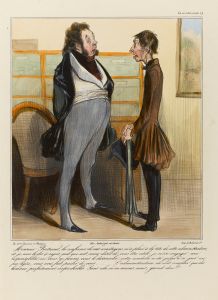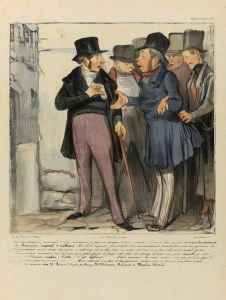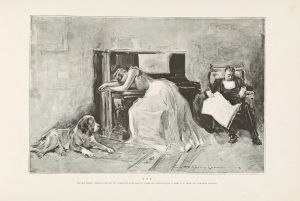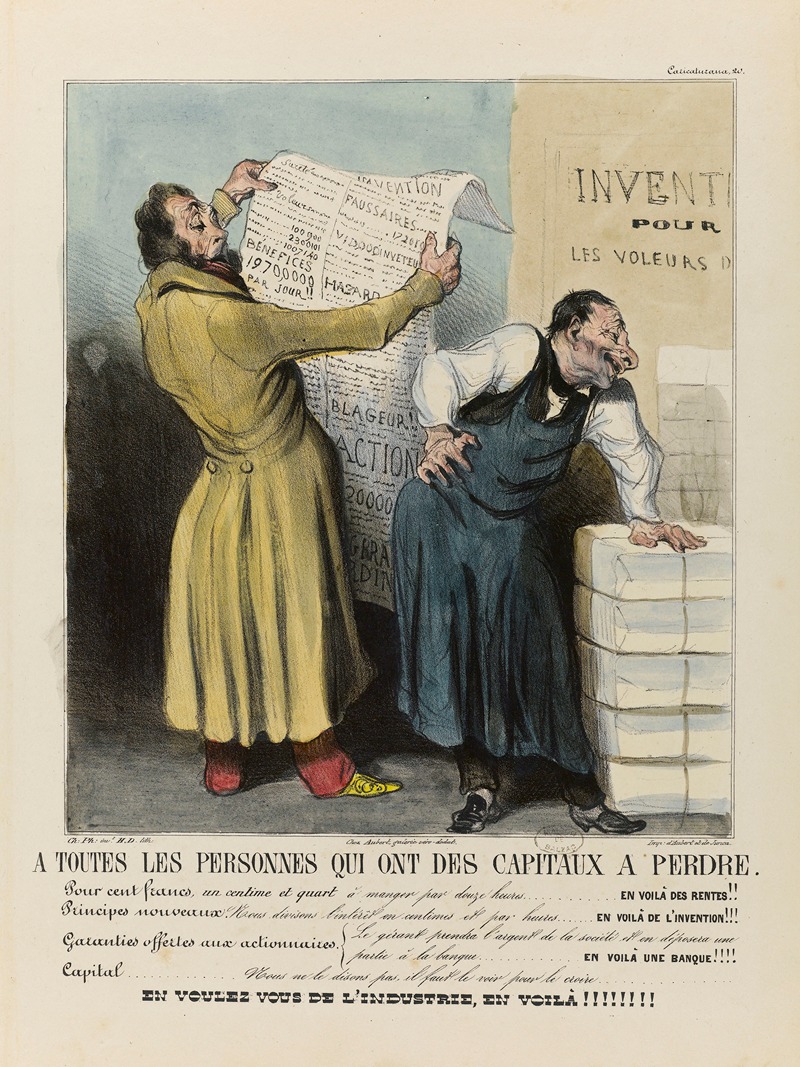
A toutes personnes qui ont des capitaux à perdre
A hand-painted replica of Honoré Daumier’s masterpiece A toutes personnes qui ont des capitaux à perdre, meticulously crafted by professional artists to capture the true essence of the original. Each piece is created with museum-quality canvas and rare mineral pigments, carefully painted by experienced artists with delicate brushstrokes and rich, layered colors to perfectly recreate the texture of the original artwork. Unlike machine-printed reproductions, this hand-painted version brings the painting to life, infused with the artist’s emotions and skill in every stroke. Whether for personal collection or home decoration, it instantly elevates the artistic atmosphere of any space.
Honoré Daumier, a prominent French artist known for his caricatures, paintings, and sculptures, created the artwork titled "A toutes personnes qui ont des capitaux à perdre" in the 19th century. Daumier was renowned for his keen observation of social and political life in France, and his works often provided a satirical commentary on the society of his time.
The title of the artwork, "A toutes personnes qui ont des capitaux à perdre," translates to "To all people who have capital to lose." This piece is a lithograph, a medium Daumier frequently employed to reach a broad audience through newspapers and journals. Lithography allowed for the mass production of images, making it an ideal medium for Daumier's satirical and often critical messages.
Daumier's work often focused on the political and social issues of his day, and this particular piece is no exception. The title itself suggests a critique of financial speculation and the risks associated with investing capital. During Daumier's lifetime, France experienced significant economic changes, including the rise of the bourgeoisie and the expansion of financial markets. These changes often led to speculative bubbles and financial crises, which Daumier critiqued through his art.
In "A toutes personnes qui ont des capitaux à perdre," Daumier likely addresses the speculative nature of the financial markets and the potential for loss faced by investors. His work often depicted the folly and greed of those involved in financial speculation, highlighting the disparity between the wealthy and the working class. Daumier's art served as a social commentary, reflecting the anxieties and tensions of a society undergoing rapid economic transformation.
Daumier's lithographs were published in various satirical journals, such as "Le Charivari," which was known for its critical stance on politics and society. Through these publications, Daumier reached a wide audience, influencing public opinion and contributing to the discourse on social and economic issues.
The style of Daumier's lithographs is characterized by bold lines and exaggerated features, which effectively convey the humor and criticism inherent in his work. His ability to capture the essence of his subjects with minimal detail is a testament to his skill as an artist and observer of human nature.
While specific details about the composition and imagery of "A toutes personnes qui ont des capitaux à perdre" are not extensively documented, it is consistent with Daumier's body of work that the piece would employ humor and satire to critique the financial practices of his time. His art remains influential, offering insights into the social and economic conditions of 19th-century France and the enduring nature of human folly in the face of financial speculation.
Overall, Honoré Daumier's "A toutes personnes qui ont des capitaux à perdre" exemplifies his ability to use art as a means of social critique, reflecting the complexities and contradictions of his era. His work continues to be studied and appreciated for its artistic merit and its incisive commentary on the human condition.







